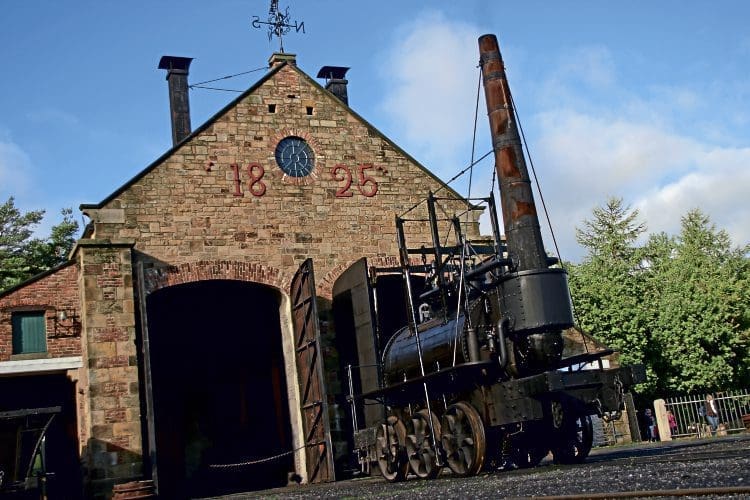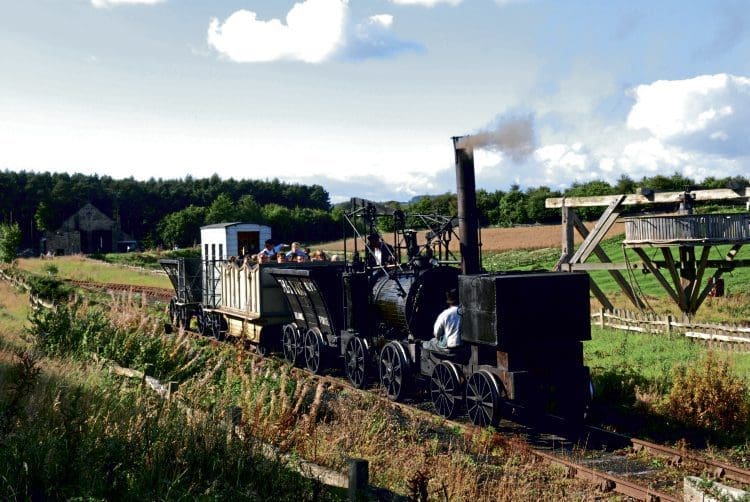Following a summer in which we have commemorated 50 years since the end of British Railways main line steam, Brian Sharpe looks back to the beginnings of steam traction. In the first of a new series, he investigates the background to how the position of chief mechanical engineer came about in the early days of steam power – leading to the evolution of steam locomotive design.
The beginnings of the steam age were 100 years earlier than the first railway locomotives – in 1712, when Thomas Newcomen invented the atmospheric engine, the first practical device that used steam power to perform mechanical work.
The Newcomen engine was a stationary machine that was used mainly for pumping water out of mines.
It operated in the opposite way to the accepted manner of the steam locomotives that were eventually developed from it, by condensing steam drawn into the cylinder and creating a partial vacuum that allowed the atmospheric pressure to push the piston into the cylinder. Hundreds of Newcomen engines were constructed during the 18th century for use throughout Britain and Europe.
Enjoy more Heritage Railway reading in the four-weekly magazine.
Click here to subscribe & save.
Attempts were made to drive machinery by Newcomen engines by converting the vertical motion into rotary motion, but these were unsuccessful, as the single power stroke produced a very jerky motion.

James Watt later improved on Newcomen’s design and roughly doubled its fuel efficiency. He made the condenser separate and reduced heat loss, while at the same time making the cylinder double-acting.
Many atmospheric engines were then converted to the Watt design and he usually gets the credit for having designed the steam engine.
Richard Trevithick, born in Cornwall in 1771, was heavily involved in mining and engineering from an early age. His most significant contribution was the development of the first ‘high-pressure’ steam engine.
He was not the first to think of using steam at a pressure of about 30psi. William Murdoch had developed and demonstrated a model steam carriage as early as in 1784 and he demonstrated it to Trevithick in 1794.
As his experience grew, Trevithick realised that improvements in boiler technology permitted the safe production of high-pressure steam that could move a piston in a steam engine on its own account, instead of using pressure only just above atmospheric in a condensing engine.
Not only would a high-pressure steam engine eliminate the condenser, but it would allow the use of a smaller cylinder, saving space and weight.

He even thought that his engine could now be so much lighter and more compact that it could be small enough to move its own weight, even with a carriage attached.
Trevithick started building his first models of ‘high-pressure’ steam engines – initially a stationary one and subsequently one attached to a road carriage.
He used a double-acting cylinder, with steam distribution by means of a four-way valve. Used steam was exhausted straight into the atmosphere, avoiding a condenser. The linear motion was directly converted into circular motion via a crank instead of using a more cumbersome beam.
Although Trevithick is credited with building the first steam locomotive, it was not a railway locomotive. Colliery waggonways had been in existence for many years but Trevithick designed his first locomotive to run on roads.
He built a full-size steam road locomotive in 1801 in Camborne, named Puffing Devil and on Christmas Eve that year, he demonstrated it by successfully carrying six passengers up Fore Street and then continuing on up Camborne Hill to the village of Beacon.
This is generally recognised as the first demonstration of transportation powered by steam.
The Puffing Devil was unable to maintain sufficient steam pressure for long periods, and was of little practical use. The machinery did not take kindly to the poor roads of the time.
Read more and view more images in Issue 247 of HR – on sale now!
Advert
 Enjoy more Heritage Railway reading in the four-weekly magazine. Click here to subscribe.
Enjoy more Heritage Railway reading in the four-weekly magazine. Click here to subscribe.











